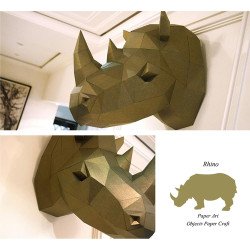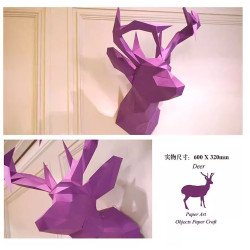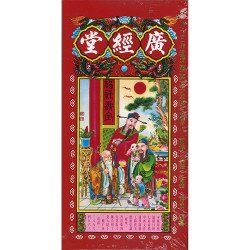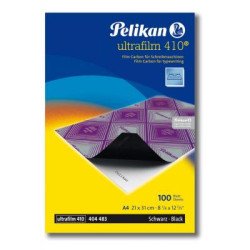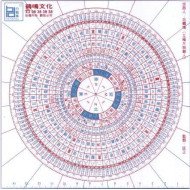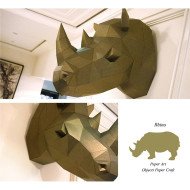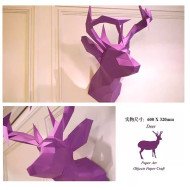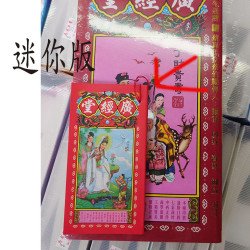
作為一位在市場營銷和風水玄學領域都浸淫多年的實踐者,我深知「家」不僅僅是物理空間,更是承載能量、影響運勢的磁場中心。每一次搬遷,都是一個能量轉換的關鍵時刻。
因此,新居入伙前的儀式,尤其是傳統的「拜四角」,在我看來絕非迷信,而是對新環境表達敬意、清理舊有能量、引進吉祥氣場的重要步驟。這篇文章,我想結合我的經驗,為即將在2025年搬新居的朋友們,提供一份實用且貼心的拜四角及入伙儀式指南,特別是如何運用通勝擇日,確保新生活有個美好的開始。
拜四角是新居入伙前淨化空間、知會地靈、祈求平安順遂的關鍵儀式。選擇一個合適的拜四角吉日和拜四角吉日吉時,並誠心地進行儀式,能有效提升新居的正面能量,為家宅帶來好運。雖然傳統儀式繁複,但現代人可以根據實際情況進行簡化,最重要的是心誠則靈。
喬遷之喜與能量轉換
搬新家,無疑是人生中的一大樂事,充滿了對未來的美好憧憬。然而,從玄學角度來看,一個空間的能量並非真空。舊有的氣場、甚至可能存在的無形眾生,都會對新入住的人產生影響。這就是為什麼自古以來,華人社會就有各種入伙儀式,其中最具代表性的便是「拜四角」。
我記得多年前,剛開始接觸風水時,對這些儀式也是半信半疑。直到我親身參與並輔導客戶進行了幾次成功的拜四角後,我才真正體會到其背後的智慧。它不僅僅是形式,更是一種通過特定儀軌,與新居的「地靈」溝通,宣告主權,並請求祂們庇佑家宅平安的方式。 同時,儀式本身也帶有淨化空間、驅散負能量的作用。 想像一下,一個空置已久的單位,可能積聚了許多沉悶甚至是不良的氣場,通過拜四角,就像是為新家進行一次徹底的「能量大掃除」。
運用通勝擇日:尋找2025年的拜四角吉日
選擇一個好的日子進行拜四角,是確保儀式效果事半功倍的關鍵。這時候,我們就需要請出傳統的智慧寶典——通勝。
通勝,又稱農民曆,記載了每日的宜忌事項,是我們擇日的重要依據。 對於搬屋入伙和拜四角,我們要尋找通勝中標明「宜入宅」、「宜移徙」或「宜搬屋」的日子。 這些日子通常被認為是適合進行喬遷相關事宜的吉日。
在為2025年擇日時,雖然具體的2025年通勝宜忌表在撰寫本文時尚無法完全列出(通勝通常在年底或次年初出版),但我可以分享擇日的基本原則和步驟,讓你在2025年通勝出版後,能夠自己動手尋找你的拜四角吉日:
- 查閱「宜」與「忌」: 打開2025年的通勝,尋找每日的「宜」和「忌」。重點關注「宜入宅」、「宜移徙」、「宜搬屋」等字眼的日子。
- 避開不利日子: 同時,要留意「忌」中是否有「入宅」、「移徙」等字眼的日子,這些日子應避免。 此外,通勝中標明「歲破」、「月破」、「四離」、「四絕」的日子,以及農曆七月(鬼月)和農曆新年正月初一至十五,傳統上都認為不適合進行搬遷和拜四角儀式。 [1, 2, 12]
- 考慮生肖相沖: 通勝每日會列出當天沖犯的生肖。選擇的拜四角吉日應避免與屋主或主要入住成員的生肖相沖。 [2, 14] 如果無法避免,則該生肖的成員在進行儀式時需要暫時迴避。 [1]
- 選擇拜四角吉日吉時: 選定吉日後,還需要選擇當天的吉時。通勝會將每日的時辰分為「吉」、「凶」、「中」等。 拜四角通常建議在白天進行,最好在下午一點前開始,入夜前完成。 [1, 12] 選擇標示為「吉」或「中」的時辰進行儀式。 避免選擇標示為「凶」的時辰,尤其要避開下午至晚上的時段。 [2, 15] 如果當天只有夜間的吉時,最好還是另選白天的吉日。
關於拜4角吉日: 無論是「拜四角」還是「拜4角」,指的都是同一個儀式。在尋找吉日吉時時,可以互換使用這些關鍵詞來查詢通勝或請教專業人士。
我通常會建議客戶,如果對自己擇日沒有把握,或者希望找到最貼合個人命格的拜四角吉日吉時,可以諮詢專業的風水命理師。他們可以根據屋主的生辰八字和新居的具體情況,提供更精準的擇日建議。 [1, 13]
拜四角儀式:準備與步驟
一旦選定了良辰吉日,接下來就是準備祭品和進行儀式了。用戶提供的內容已經很詳細,我會在此基礎上補充一些我的經驗和玄學上的意義。
準備祭品:
祭品的準備是拜四角儀式中非常具體且重要的一環。用戶提到的清單非常實用,我將其整理如下,並略作補充:
- 拜四角專用衣紙一套: 通常包含「四角衣」(拜四角紙料四份)及「地主衣」一份,以及「大百解」一張。 [2, 9] 這些在香燭店都有售,可以直接說明是「拜四角」使用。 [4, 8]
- 香燭: 至少15支香(通常是3支大香、12支小香)及5對紅蠟燭。 [3, 9]
- 紅蘿蔔一條: 切成厚片,用作插香燭。 [3, 8]
- 祭品五份: 分別放置在四個角落和中心位置。每份通常包含:
- 五種水果(或三種不同顏色水果):例如蘋果、橙、梨、蕉等。 蘋果有平安之意。
- 有殼花生、糖果一堆:象徵好運連連、甜蜜順利。 [
- 五色豆一堆:代表五行俱全,生生不息。
- 連皮的豬肉或者燒肉五份:傳統上用於祭拜地靈。
- 少許白米:用於淨化空間,去除不潔氣場。 [1, 7, 8, 10]
- 茶或者燒酒: 準備幾杯(通常是3杯或7杯)用於供奉。 [
- 化寶盤: 用於焚燒衣紙,如果屋苑有指定化寶區則可省略。 [2, 9]
正如用戶所說,祭品的多寡和種類各門派說法不同,最重要的是心誠。 [2, 8] 我通常會建議客戶準備齊全基本物品,不必過於執著細節,誠心最重要。
儀式步驟:
用戶提供的步驟非常清晰,我會按照順序重新組織並加入一些玄學解釋:
- 準備與擺放: 在新居打掃乾淨後,將祭品用紙碟分裝好,分別擺放在廳堂的四個角落和中心位置。 [3, 4, 5, 6, 7, 9, 11, 20] 中心位置的祭品份量可以多一些,代表對中心地靈的特別敬意。 [
- 填寫「大百解」: 在「大百解」上寫下新居的詳細地址和所有住戶的名字,從屋主開始,按長幼順序書寫。 [2, 4, 7, 8, 17] 這就像是一份正式的「入伙通知書」,告知神明和地靈你們即將入住。
- 點燃香燭與稟神: 從廳堂中心位置開始,面向大門,點燃香燭。 [3, 4, 5, 6, 9] 用紅燭的火點燃香,然後將香插在紅蘿蔔片上。 [3, 6] 雙手合十,誠心地向神明稟告,報上自己及家人的名字,說明即將搬入此單位,祈求保佑家宅平安、出入平安、身體健康、事事順利等吉祥願望。
- 拜祭四角: 手執衣紙,在香火上順時針繞三圈(此步驟可省略,但有助加強意念)。 [3, 6, 9] 然後,從近大門的角落開始,按順時針方向(或逆時針,視乎大門開啟方向而定 [9] )逐一拜祭四個角落。 在每個角落擺放一份祭品、插上香燭,並再次誠心禱告。 傳統上認為四角象徵天門、地戶、人門、鬼戶,拜祭四角有驅逐負能量、請各方神靈庇佑之意。 [2, 6, 9, 17]
- 回到中心: 拜完四個角落後,回到廳堂中央再次拜祭,鞏固整個空間的吉祥氣場。 [9]
- 化寶: 當香燭燒到一半時,可以根據擺放的順序(或全部收集起來),將所有衣紙放入化寶盤中焚燒。 [3, 4, 5, 6, 7, 9, 20] 化寶是將心意和祈願傳達給神明的方式。 在化寶時,可以默念祈福的說話。
- 清理現場: 待火種自然熄滅後,用一支新掃把清理現場,將灰燼和垃圾掃出大門,象徵掃走霉氣和不潔之物。 [5, 7, 9] 祭品通常可以收起食用,有添福去邪之意。
我的經驗分享:
我曾經輔導一位客戶進行拜四角。她對傳統儀式不太熟悉,一開始有些緊張。我告訴她,最重要的是誠心。我們一起準備祭品,我引導她一步步進行。當她親手點燃香燭,誠心祈禱時,我能感受到她內心的平靜和對新家的期待。儀式結束後,她告訴我,感覺家裡空氣都變好了,心裡也踏實了很多。這讓我更加相信,儀式本身帶來的心理慰藉和積極的意念,也是其重要價值所在。
其他入伙宜忌與風水小貼士
除了拜四角,搬新居還有一些其他的傳統宜忌和風水小貼士,可以幫助你更好地適應新環境,引進好運。
- 入伙順序: 進入新居時,應按照輩份長幼順序,由年長者先進入屋內。 傳統上也建議屋主手持米缸(裝滿米並放入利是)或貴重物品入屋,寓意豐衣足食、金銀滿屋。 [2, 4] 避免空手入屋。 [4]
- 衣著: 儀式當天,盡量避免穿白色或麻質的衣服,這些顏色在傳統上與喪事相關。 [1, 6] 建議穿著顏色鮮豔、喜慶的衣服。
- 孕婦與生肖相沖者: 如用戶所說,如果住戶的生肖和吉日相沖,可以讓其他住戶代辦儀式。 [1] 傳統上認為孕婦不宜參與搬遷和拜四角,主要是擔心動到胎神或因勞累影響胎兒,建議迴避。 [6, 20]
- 淨化空間: 搬入前幾天,可以打開門窗通風,讓陽光進入,有助於驅散舊氣。 [16]
- 「風生水起」儀式: 正式入伙當天,可以進行一些簡單的「風生水起」小儀式。例如,開爐煮食,煮一壺水,寓意財源滾滾、風生水起。 [2, 13, 15, 16] 同時,打開家中所有燈光,尤其是客廳,讓屋內陽氣充足、氣旺不息。 [13]
- 暖房: 搬入後一週內,可以邀請親朋好友來新家聚會,增加人氣,活絡家中的氣場。 [16]
引用一句話,我很喜歡用來形容入伙儀式的重要性:
「新居入伙,不僅是身體的遷徙,更是氣場的轉移與融合。誠心做好每一個步驟,就是為新生活打下堅實的能量基礎。」
心誠則靈,開啟新篇章
2025年即將到來,對於計劃搬新家的朋友們來說,拜四角和入伙儀式是值得認真對待的環節。結合通勝擇日、風水原理與誠懇的心意,我們可以為自己和家人創造一個更和諧、更吉祥的居住環境。
雖然傳統儀式有其繁複之處,但正如用戶提到的,現代社會已經有了很多簡化的方式。 最核心的不是儀式的複雜程度,而是我們對新家的重視、對地靈的敬意,以及對未來美好生活的期盼。 選擇一個拜四角吉日和拜四角吉日吉時,認真準備祭品,誠心地進行儀式,這份心意本身就是最強大的正能量。
希望這篇文章能幫助你在2025年順利完成搬遷和入伙儀式,開啟人生新的美好篇章!
Q&A 環節
Q1:如果我在2025年找不到完全符合所有條件的拜四角吉日怎麼辦?
A1:擇日是為了趨吉避凶,但有時候完美的日子確實難尋。如果找不到完全符合的日子,可以優先選擇通勝中標明「宜入宅」或「宜移徙」的日子,同時避開「歲破」、「月破」等大凶之日,以及與屋主生肖相沖的日子。 [1, 2, 14] 如果實在無法避開生肖相沖,相關成員在儀式進行時暫時迴避即可。 [1] 最重要的是心誠,量力而為。
Q2:我住的是高層公寓,也需要拜四角嗎?
A2:是的,無論是獨立屋還是高層公寓,都有其所處空間的「地靈」和氣場。 拜四角儀式是向該物業的五方神明和地靈打招呼,祈求庇佑,所以即使是高層公寓,也建議進行拜四角。
Q3:拜四角儀式一定要在入伙前完成嗎?
A3:是的,拜四角的主要目的是在正式入住前淨化空間、知會地靈。 傳統上建議在傢俬入屋前進行。 [6, 9] 如果新居需要裝修,則應在裝修前先拜四角。
Q4:拜四角後,祭品可以吃嗎?
A4:傳統上認為拜四角後的祭品可以收起食用,有添福去邪的寓意。 [4, 6, 8] 但也有說法是祭品不宜食用。 這方面可以根據個人習慣和舒適度來決定,最重要的是對神明表達敬意。
Q5:如果我在儀式中不小心做錯了步驟怎麼辦?
A5:不必過於擔心。拜四角講求誠心,儀式中的小失誤通常不會造成嚴重的影響。 如果發現做錯了,可以誠心向神明稟告,說明情況,並繼續完成後續步驟即可。重要的是你對新家的重視和祈求平安順遂的心意。



